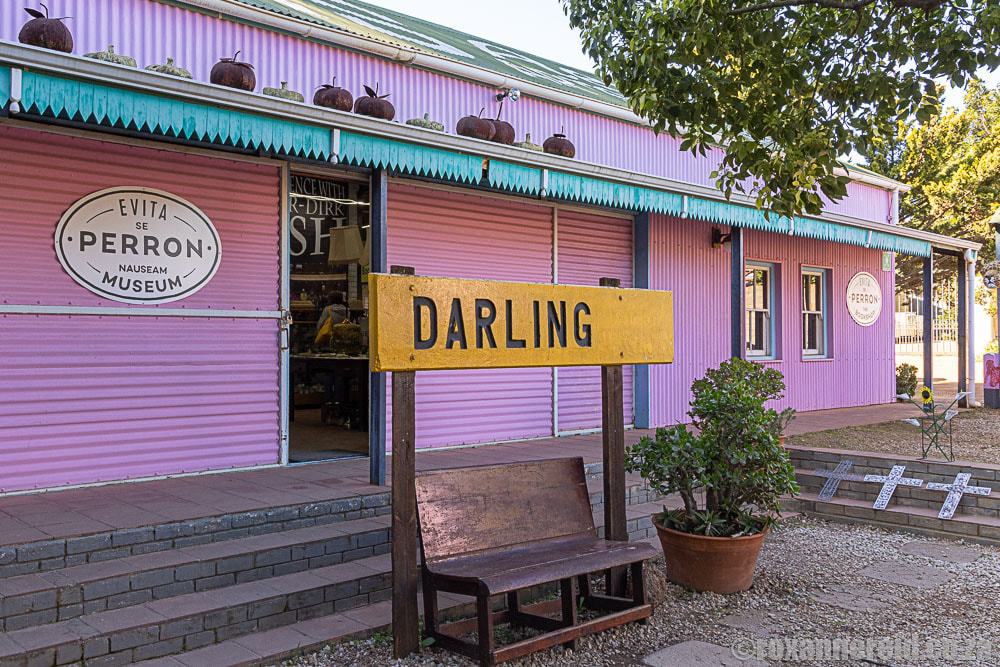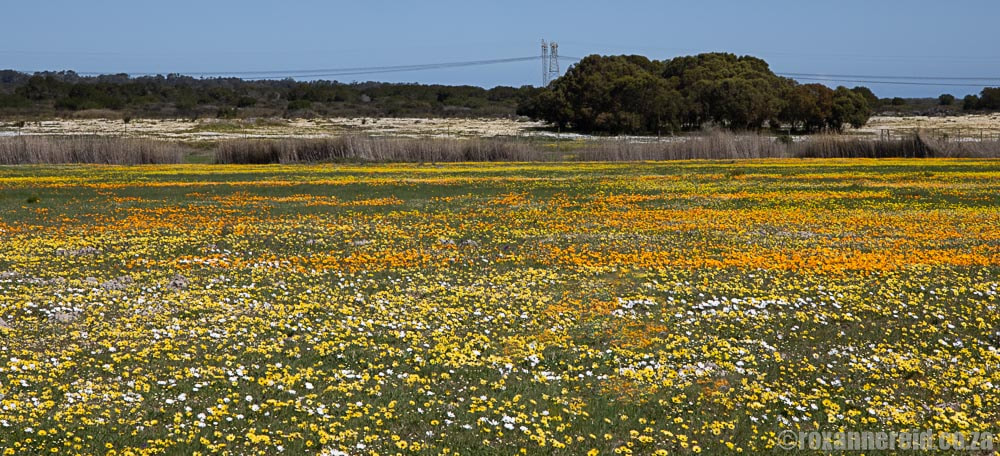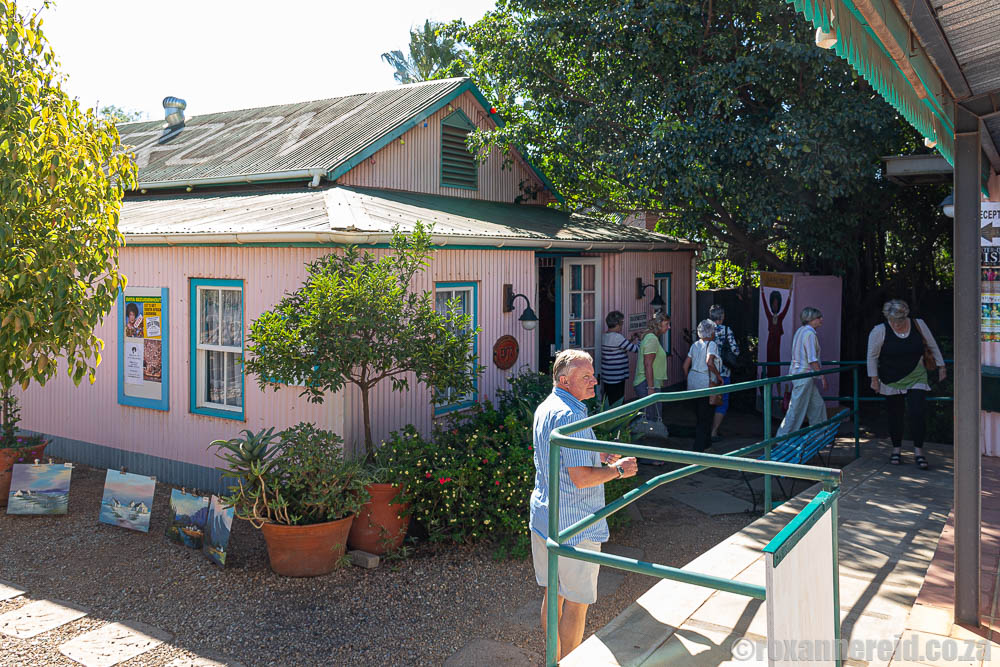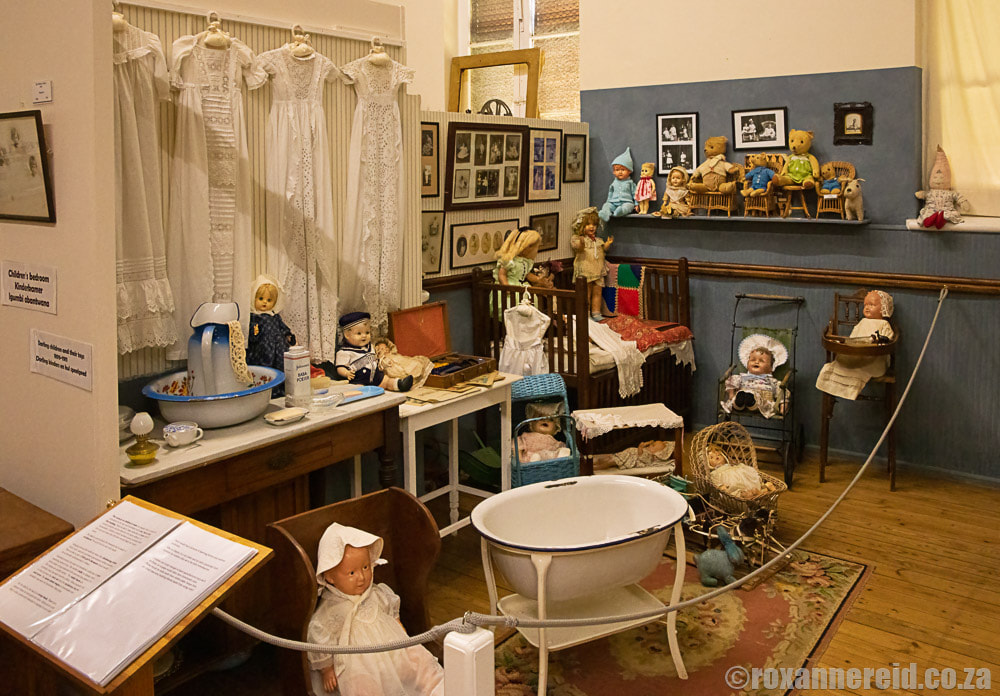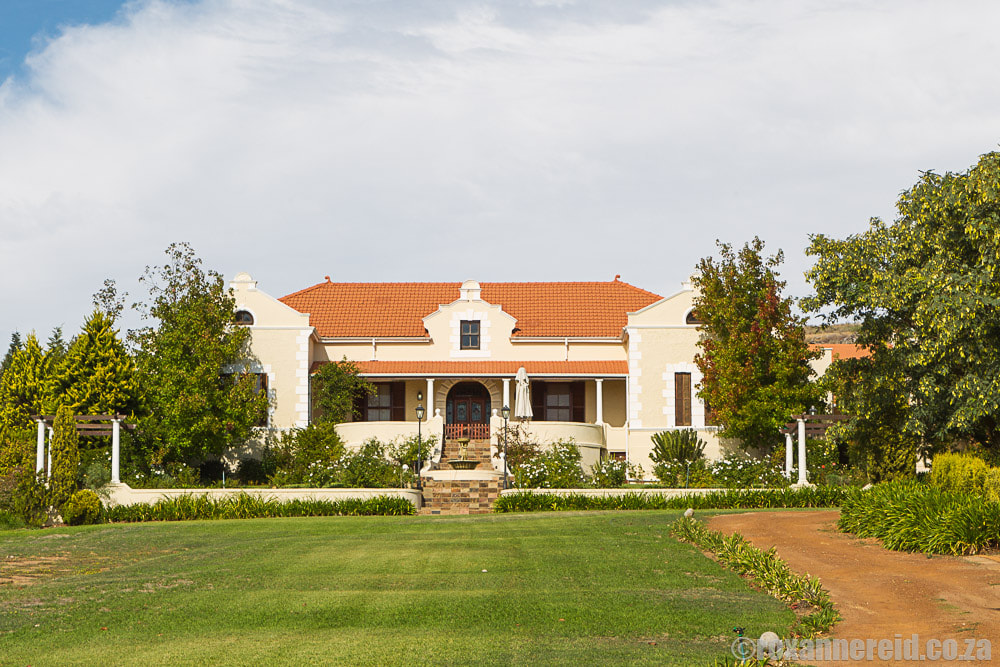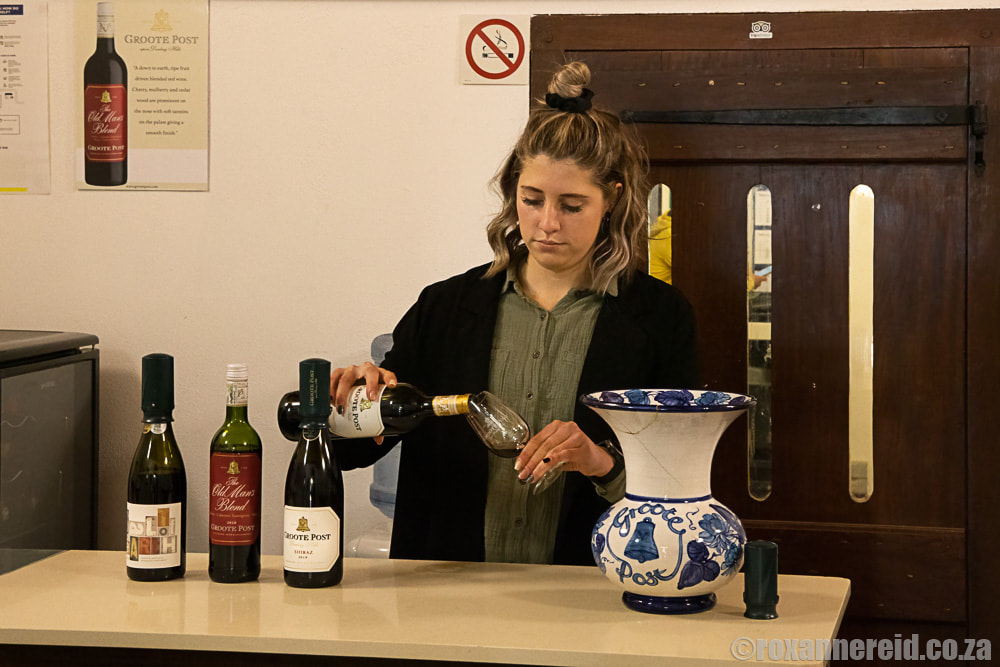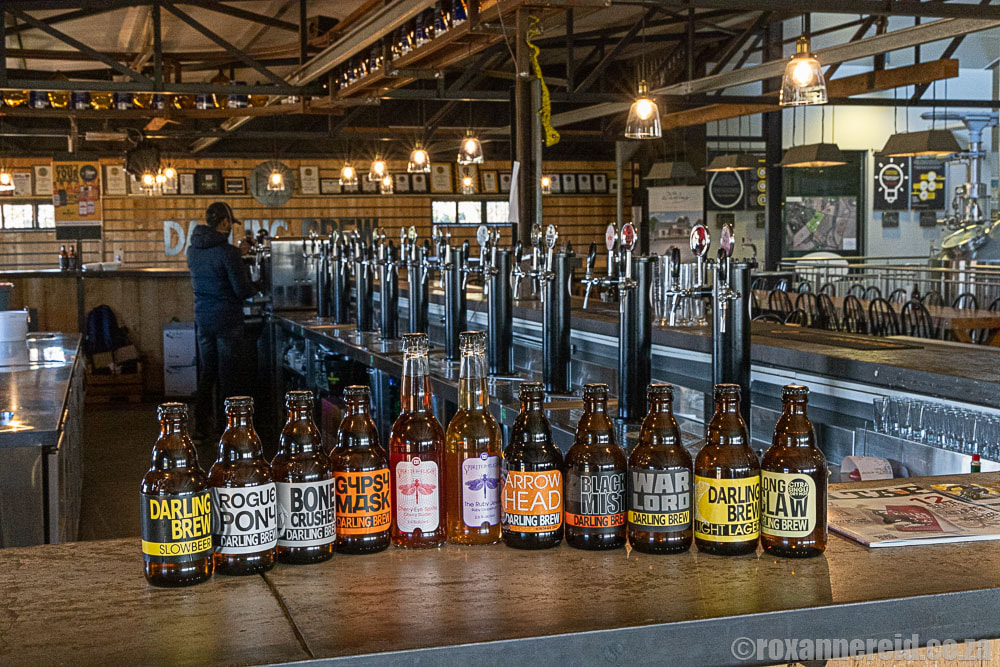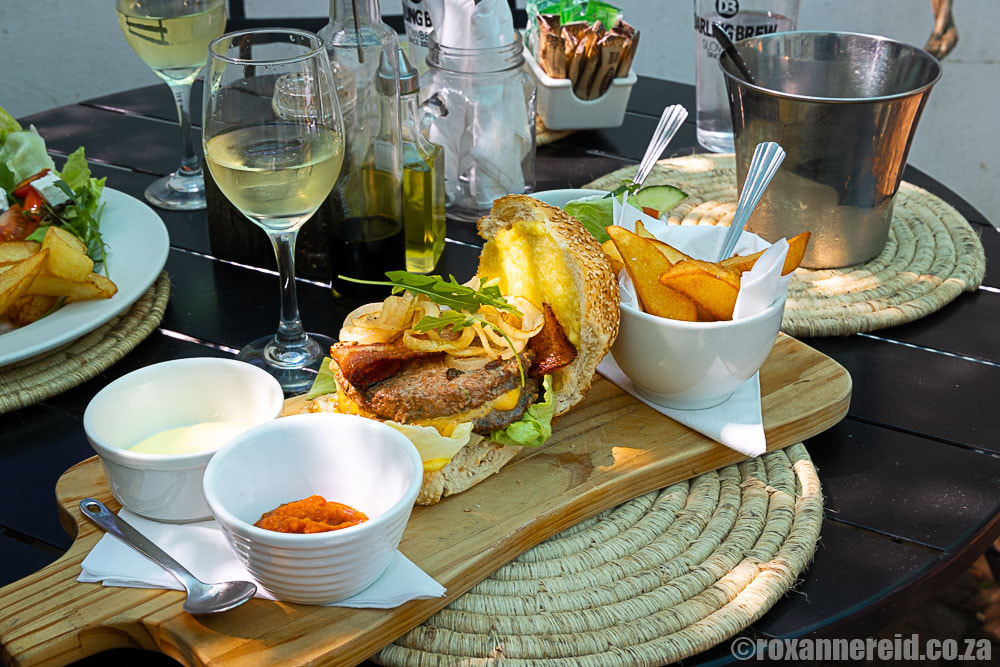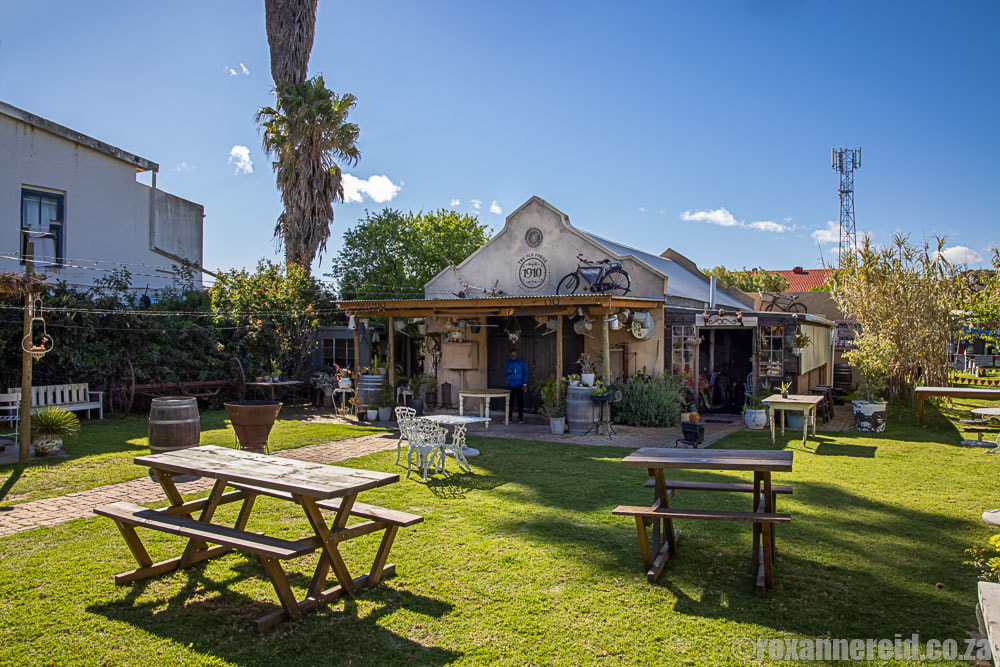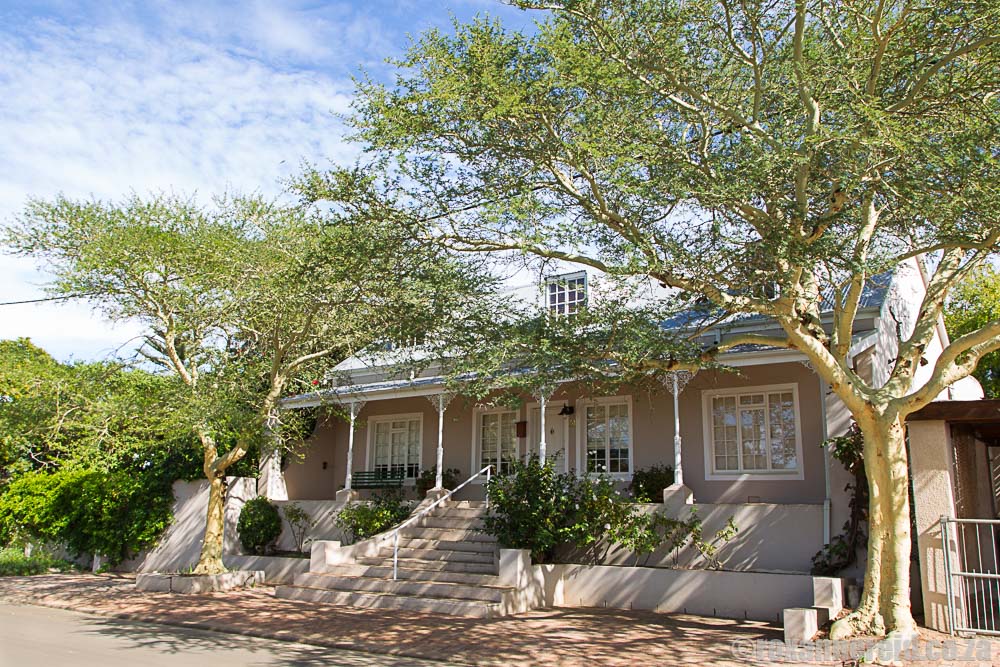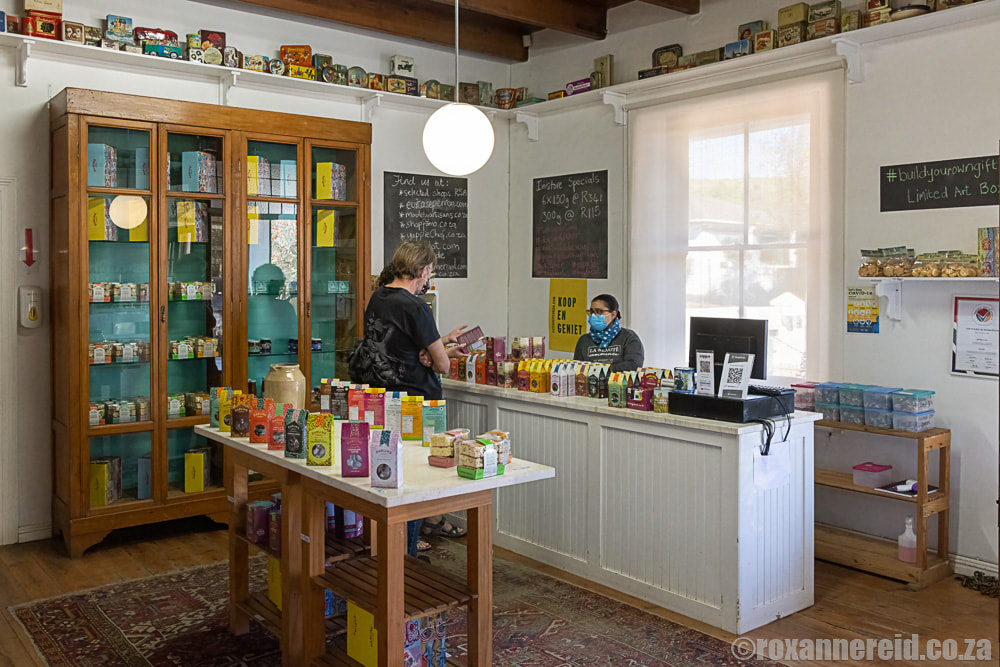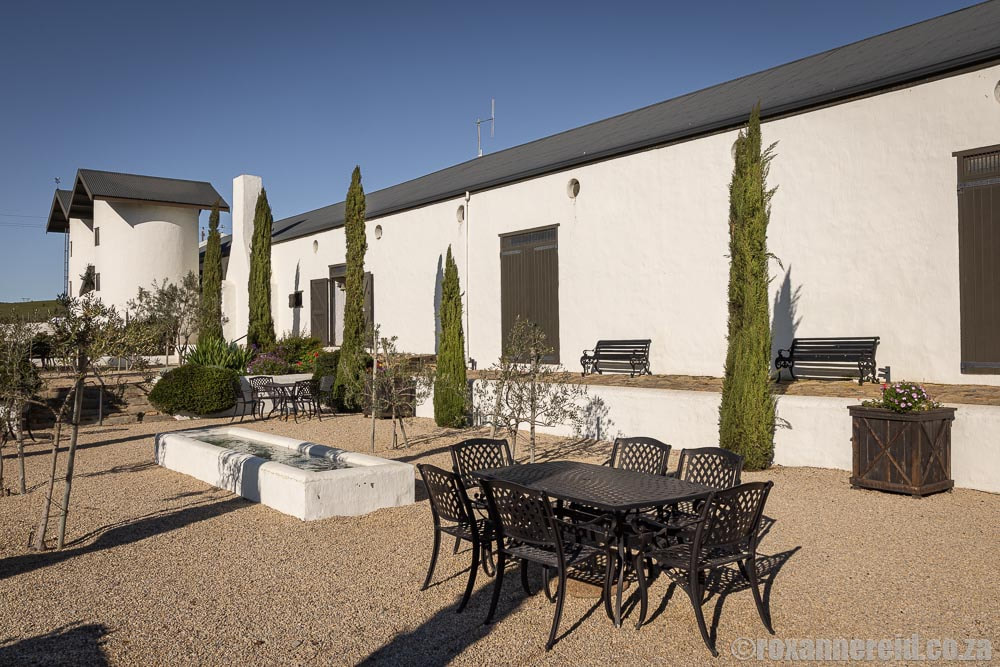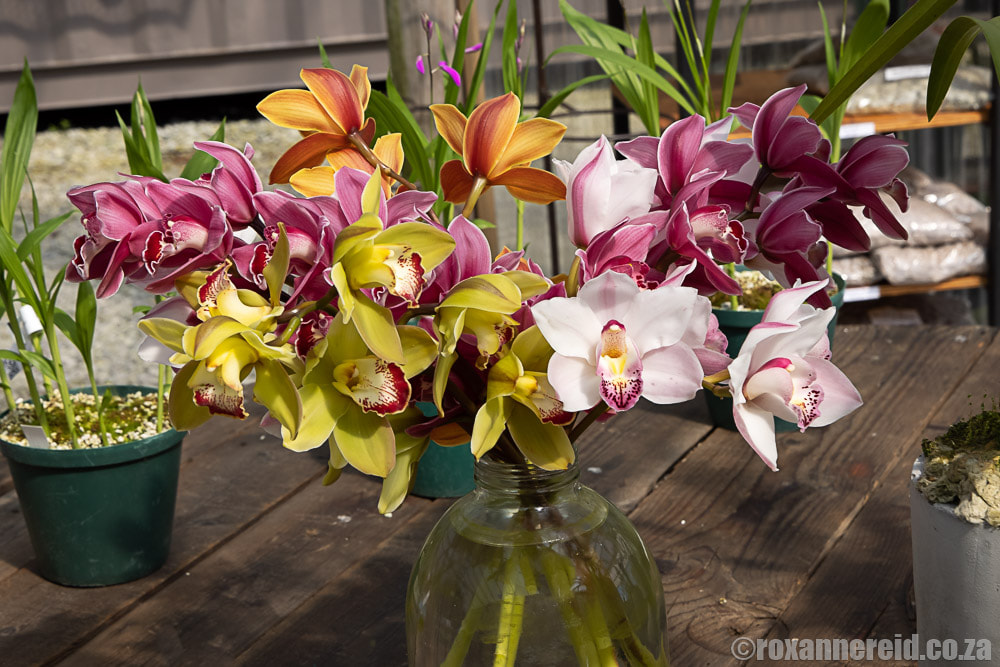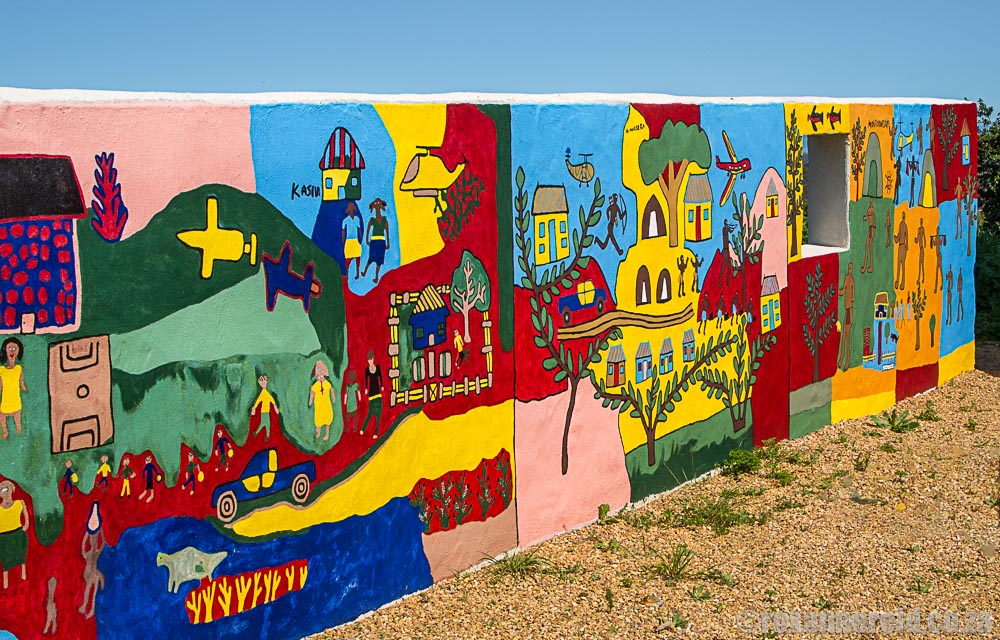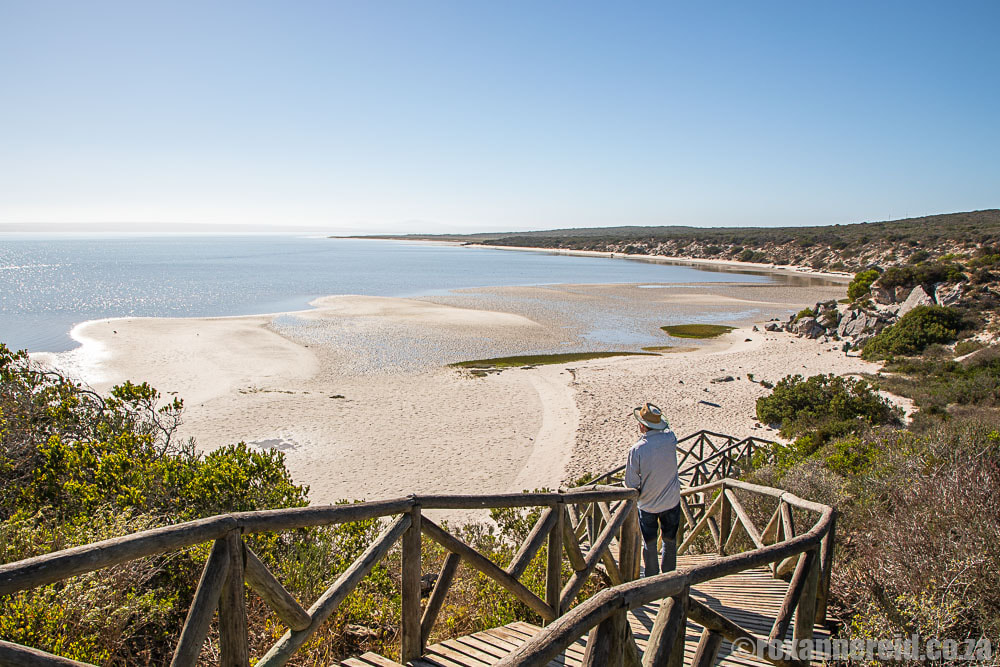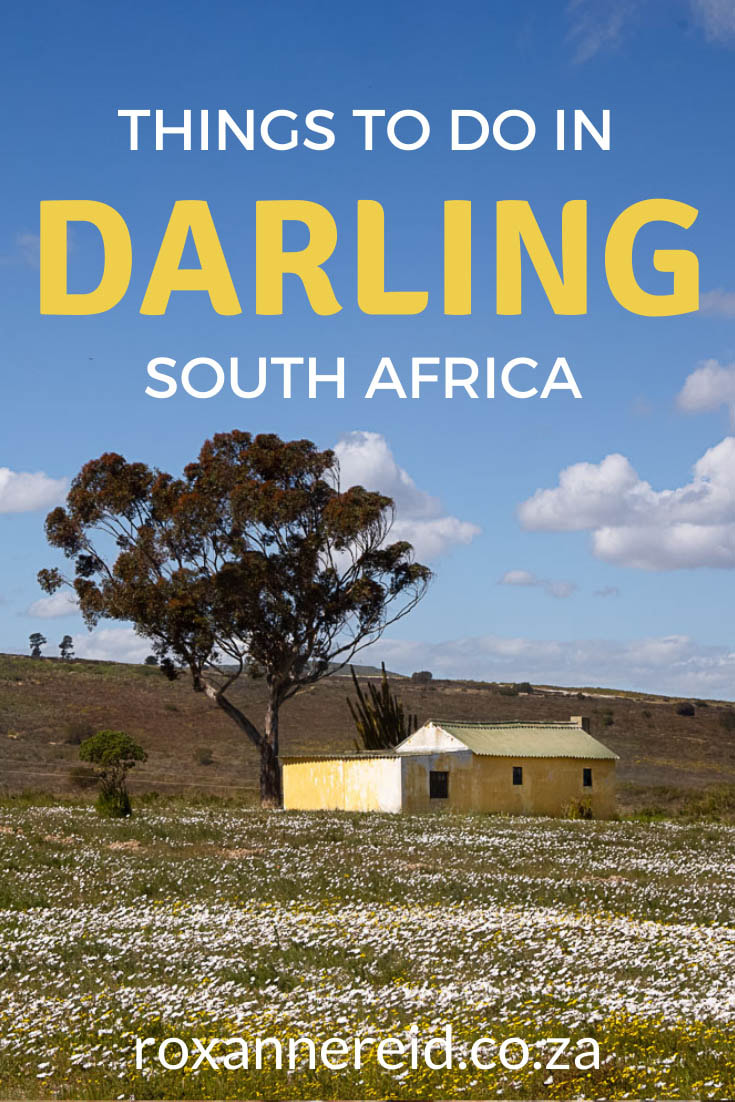The West Coast village of Darling, just over an hour’s drive from Cape Town, is a well-loved weekend getaway, particularly during the Darling Wildflower Show in September. But Darling has a lot more to offer at any time of year. Here are 20 things to do in Darling on the Western Cape’s West Coast.
Lying between vineyards and wheatfields on the West Coast, Darling is part of the Cape Floral Region and known for its wealth of flowering plants, especially in spring. The town itself is a strange mish-mash of ugly facebrick buildings and well restored Victorian treasures. Perhaps its most famous residents are satirist Pieter Dirk Uys and straight-talking Evita Bezuidenhout. There’s also a small community of artists creating colourful murals, fine art and wire sculptures.
Here are some of my favourite things to do in Darling.
1. See the spring flowers
One of the best of things to do in Darling is to visit during August and September when the khaki veld blazes to life with the glorious colours of wild flowers. The annual Darling Wildflower Show began way back in 1917 and is well worth a visit in September. It had to be cancelled in 2020 and 2021 because of the pandemic, but it plans to be back in 2022.
Another good way to see wild flowers around Darling is to walk around the Tienie Versfeld Nature Reserve on the R315 between Darling and Yzerfontein or the Renosterveld Reserve behind Darling Primary School. If you’d prefer to drive around, take to the gravel roads at Oudepost Farm (also home to Duckitt’s Nursery), Waylands farm or the Contreberg Wildflower Reserve – all on the R307 south of town. All places I’ve mentioned are open every day in August and September and free to enter. Another flower-filled stretch is the turn off to the Groote Post winery which takes you through the Pampoenvlei private reserve.
Keep up to date on where the flowers are at their best by calling Darling’s flower hotline on 084 916-1111.
2. See a show at Evita se Perron
Another good way to see wild flowers around Darling is to walk around the Tienie Versfeld Nature Reserve on the R315 between Darling and Yzerfontein or the Renosterveld Reserve behind Darling Primary School. If you’d prefer to drive around, take to the gravel roads at Oudepost Farm (also home to Duckitt’s Nursery), Waylands farm or the Contreberg Wildflower Reserve – all on the R307 south of town. All places I’ve mentioned are open every day in August and September and free to enter. Another flower-filled stretch is the turn off to the Groote Post winery which takes you through the Pampoenvlei private reserve.
Keep up to date on where the flowers are at their best by calling Darling’s flower hotline on 084 916-1111.
2. See a show at Evita se Perron
You simply can’t visit Darling without taking in a show at Evita se Perron, brainchild of satirist Pieter Dirk Uys and home to straight-talking Evita Bezuidenhout. From the old Darling station platform Evita, the ‘most famous white woman in South Africa’, keeps a beady eye on the progress of democracy and doesn’t pull her punches. Theatre has been hard hit by the pandemic, but Uys was back in action in November 2021 with updated and new shows. He’s a tour de force and we hope there’ll be many more in future.
Go early to explore the whole precinct, stay for lunch in the Café or restaurant (see point 7) afterwards. There’s much to marvel at in the bookshop and the Museum Nauseam with its posters, photographs and artefacts that tell the stories of Afrikaner history. Don’t miss the Boerassic Park sculpture garden at the back. It’s all about Boere Kitsch and a gentle poking of fun. The series of Helen Martins-type cement sculptures include Thabo Mbeki on his plane, Tony Leon in his pram, Winnie Mandela in her bath, and Eugene Terreblanche falling off his horse. There’s even a small homage to Helen Martins herself.
3. Visit the museum
Go early to explore the whole precinct, stay for lunch in the Café or restaurant (see point 7) afterwards. There’s much to marvel at in the bookshop and the Museum Nauseam with its posters, photographs and artefacts that tell the stories of Afrikaner history. Don’t miss the Boerassic Park sculpture garden at the back. It’s all about Boere Kitsch and a gentle poking of fun. The series of Helen Martins-type cement sculptures include Thabo Mbeki on his plane, Tony Leon in his pram, Winnie Mandela in her bath, and Eugene Terreblanche falling off his horse. There’s even a small homage to Helen Martins herself.
3. Visit the museum
Don’t miss the Darling Museum in Pastorie Street. I love that it’s not just a random display of items reflecting the lifestyle of the village since it was established in 1853. Instead, the hall-like interior of the 19th century Town Hall in which it is housed is divided up into ‘rooms’, each crammed with intriguing pieces. In one, two women are preparing food in a kitchen complete with hearth and ingenious gadgets to make their lives easier; another depicts a child’s nursery with its crib and old-fashioned toys. Here a gentleman’s dressing room, there a parlour with chairs drawn up to the fireplace, as if the occupants have just left. There’s even a general dealer and a saloon.
A separate section of the museum has churns, washing tables, paddles and moulds that tell the story of the early butter-making industry in Darling. Alongside, an agricultural hall portrays the history of farming in the area, with steam engines, tractors and an enormous wooden threshing machine.
Museum staff are well-informed and the building doubles as the tourism office so you can pick up a Darling map and brochures, even pump the tourism officer for anything you want to know about the town.
4. Go wine-tasting
Visit some farms on the Darling wine route. Ormonde is a gracious homestead set among vineyards in Mt Pleasant Street at the edge of Darling village. Ormonde produces five ranges: Chip off the Old Block from the oldest vines, Ondine, the Basson range, a Barrel Selection, and the Heritage collection that showcases two flagship blends and a noble late harvest. For a fee, you can choose to taste five of the 10 wines on their tasting list. There’s a chocolate and wine pairing too, and you can order cheese and charcuterie platters.
A separate section of the museum has churns, washing tables, paddles and moulds that tell the story of the early butter-making industry in Darling. Alongside, an agricultural hall portrays the history of farming in the area, with steam engines, tractors and an enormous wooden threshing machine.
Museum staff are well-informed and the building doubles as the tourism office so you can pick up a Darling map and brochures, even pump the tourism officer for anything you want to know about the town.
4. Go wine-tasting
Visit some farms on the Darling wine route. Ormonde is a gracious homestead set among vineyards in Mt Pleasant Street at the edge of Darling village. Ormonde produces five ranges: Chip off the Old Block from the oldest vines, Ondine, the Basson range, a Barrel Selection, and the Heritage collection that showcases two flagship blends and a noble late harvest. For a fee, you can choose to taste five of the 10 wines on their tasting list. There’s a chocolate and wine pairing too, and you can order cheese and charcuterie platters.
Take the R307 out of Darling towards Cape Town and turn off onto a gravel road towards Groote Post. Sit outside under a shade umbrella next to the historic building and take your time as you taste six wines for a small fee. My personal favourites are the sauvignon blanc, the scented riesling (great with a dessert or curry) and the luscious merlot. There’s a restaurant called Hilda’s Kitchen at Groote Post too.
Other Darling wine farms include Cloof and Darling Cellars. If you don’t want to drive around the countryside to find your wine – although I think that’s part of the appeal – pop in at The Darling Wine Shop in Main Road. They hold a good selection of wines produced in Darling, including a few others. Staff members are knowledgeable and always ready with recommendations.
5. Visit a craft brewery
5. Visit a craft brewery
If beer is more your speed than wine, visit the Darling Brew tasting room over the railway line. This craft beer prides itself on its ‘slow beer’ philosophy, to reflect its slow fermentation and, well, yes, a kind of lifestyle that has an appeal that mass-produced beer doesn’t really offer. It’s also the first carbon neutral brewery in Africa.
Sit at the bar or relax at tables inside or outside while you have your tasters before deciding which you like best. If you want to see the gleaming tanks where the brews are made, go upstairs to admire them through a glass wall. Choose from Darling Brew Slow Beer, Bone Crusher, Black Mist, Pixie Dust, Rogue Pony and more. If the beer starts going to your head, order a meal to soak it up. They do breakfasts and lunches from burgers and fish n chips to boerie rolls and curries. There’s a kid’s play area outside to keep them amused while you taste.
6. Discover the spirit of Darling
Darling has recently added to its wine and beer offering with a spirits launch – Darlington Gin. Billed as a ‘classical but redefined London style dry gin with a distinct juniper, taste and aroma’ it also has a hint of kukumakranka and other florals. You’ll find it at The Darling Wine Shop at 5 Main Road. They also stock other local gins like Nightshade Gin from the West Coast and Six Dogs from somewhere between the Breede River and Hex River valleys. Roll up whenever the shop is open to buy, but if you’d like a tasting first just phone ahead to be sure they can accommodate you.
7. Sample some Darling restaurants
Sit at the bar or relax at tables inside or outside while you have your tasters before deciding which you like best. If you want to see the gleaming tanks where the brews are made, go upstairs to admire them through a glass wall. Choose from Darling Brew Slow Beer, Bone Crusher, Black Mist, Pixie Dust, Rogue Pony and more. If the beer starts going to your head, order a meal to soak it up. They do breakfasts and lunches from burgers and fish n chips to boerie rolls and curries. There’s a kid’s play area outside to keep them amused while you taste.
6. Discover the spirit of Darling
Darling has recently added to its wine and beer offering with a spirits launch – Darlington Gin. Billed as a ‘classical but redefined London style dry gin with a distinct juniper, taste and aroma’ it also has a hint of kukumakranka and other florals. You’ll find it at The Darling Wine Shop at 5 Main Road. They also stock other local gins like Nightshade Gin from the West Coast and Six Dogs from somewhere between the Breede River and Hex River valleys. Roll up whenever the shop is open to buy, but if you’d like a tasting first just phone ahead to be sure they can accommodate you.
7. Sample some Darling restaurants
Our favourite place to eat in Darling is The Marmalade Cat on the main road, opposite the Engen fuel station. It’s a trendy little eatery that’s a must for breakfast, lunch or tea. The menu includes toasties, quiche, oxtail, pork belly, lamb pie and bobotie. We enjoyed a freshly made roasted veg tramezzini and salad, and a burger with wedges – both delicious and attractively presented. The lemon meringue was so yummy we took some home with us for later. They also have a special pizza night on Fridays. Staff are helpful and friendly. If you’re a cat lover, you’ll like the wooden cat outside that gives the restaurant its name, but remember to look out for the real live marmalade cat too.
There are two restaurants at Evita se Perron at the old Darling station. The Café, coffee shop and deli in the old theatre also sells a range of jams and preserves, toffees and chutneys, and has some interesting vintage furniture and bric a brac. It’s open daily for breakfast and lunch with a menu that includes pies, boerie rolls, vetkoek, jaffles, milk tart and koeksisters. The second, Kossie Sikilela, is a more upmarket eatery where you might find things like snoek, pork belly or lamb bredie on the menu. It opens for lunch only on Fridays to Sundays – best to book ahead.
There are two restaurants at Evita se Perron at the old Darling station. The Café, coffee shop and deli in the old theatre also sells a range of jams and preserves, toffees and chutneys, and has some interesting vintage furniture and bric a brac. It’s open daily for breakfast and lunch with a menu that includes pies, boerie rolls, vetkoek, jaffles, milk tart and koeksisters. The second, Kossie Sikilela, is a more upmarket eatery where you might find things like snoek, pork belly or lamb bredie on the menu. It opens for lunch only on Fridays to Sundays – best to book ahead.
The Old Forge in Long Street is a quirky old barn with an interior that’s rich in wood, books and old-fashioned knick-knacks. Sit inside or outside in the garden to scoff salads, pasta dishes, pizzas, fish, and steaks.
You’ll find Hilda’s Kitchen in a grand old Cape Dutch building at Groote Post wine estate, the setting reason enough to visit. The menu may include classics like pork belly, leg of lamb, or a pasta dish. Booking is essential.
Café Mosaic is a restaurant and bar on the main road that’s been around for more than 25 years. It does breakfasts as well as meals like burgers, pizzas, and fish and chips. For Italian food from pasta to pizza, try Ciao Darling where you can eat inside or in the shady garden. And of course there’s also grub at the Darling Brew Tasteroom (see point 5).
Not all of these restaurants are open seven or even six days a week. Please use the links above to check opening days and times before you visit.
8. Wander the town
You’ll find Hilda’s Kitchen in a grand old Cape Dutch building at Groote Post wine estate, the setting reason enough to visit. The menu may include classics like pork belly, leg of lamb, or a pasta dish. Booking is essential.
Café Mosaic is a restaurant and bar on the main road that’s been around for more than 25 years. It does breakfasts as well as meals like burgers, pizzas, and fish and chips. For Italian food from pasta to pizza, try Ciao Darling where you can eat inside or in the shady garden. And of course there’s also grub at the Darling Brew Tasteroom (see point 5).
Not all of these restaurants are open seven or even six days a week. Please use the links above to check opening days and times before you visit.
8. Wander the town
Wander around town or ask at the tourism office (see point 3) about the historic village walk that takes you from the museum and through the older part of Darling. Take your bicycle along with you and go on a slow ride around the dorp to see some of the pretty homes and gardens. Or, if you’re really lazy, just take a drive up and down some of the roads; you’ll find the back streets much prettier than the main road.
9. Go mountain biking
Love your mountain bike and getting out in the fresh air for a bit of a workout? Spend some time on one of the trails at Wolwefontein 5km out of Darling on the R315 towards Yzerfontein. Download the map of the trails from the website, park, pay the small fee and then follow the arrows. The green route (about an hour) is for those with moderate skills, the red route (90min) for experienced riders. There are ablutions on site, and fresh food and hot/cold drinks from Living Colour.
10. Become sweet on Darling
9. Go mountain biking
Love your mountain bike and getting out in the fresh air for a bit of a workout? Spend some time on one of the trails at Wolwefontein 5km out of Darling on the R315 towards Yzerfontein. Download the map of the trails from the website, park, pay the small fee and then follow the arrows. The green route (about an hour) is for those with moderate skills, the red route (90min) for experienced riders. There are ablutions on site, and fresh food and hot/cold drinks from Living Colour.
10. Become sweet on Darling
If you’ve visited the Darling Museum (see point 3), you’ll know that Darling has long been known for its quality butter. Visit Darling Sweet in Long Street and taste what happens when that’s combined with condensed milk in delicious toffees and caramels. The sweets are hand-crafted using traditional methods and without adding artificial colorants, flavorings or preservatives. They’re not cheap, but they’re high-quality sweets and well worth it because they taste like the real deal. My favourite is Tannie Evita’s Classic toffee, but there are lots of others with flavours from mint, ginger and chocolate to orange, rooibos and liquorice. A small percentage of all sales goes to The Darling Trust, which does good work in Darling by empowering locals to help themselves.
11. Taste olives and olive oil
11. Taste olives and olive oil
If all things olive light up your eyes, then pay a visit to Darling Olives on Alexanderfontein Farm 3km from Darling on the R315. You might see some of the farm’s cows, sheep and magnificent horses on your way in. Here you can get a guided tasting of olives, extra virgin olive oil, as well as olive jams, marmalade, and rubs. The farm has 70ha of olive trees, most of them producing Mission olives. During the tasting (perhaps with a cosy logfire in winter), you’ll learn a lot about what to look for in quality olives and olive oil. There’s a small fee for tasting.
12. Marvel at Darling’s orchids
12. Marvel at Darling’s orchids
If you’re a lover of orchids, visit Darling Orchids at the Duckitt Nurseries off the R307 south of town. The shop operates as a separate business from the nursery. The nursery is mainly a bulk export business that’s only open to the public on the first Saturday each month from May to November. But the shop is open Mondays to Fridays during orchid flowering season (April to November) and every day during spring flower season (August and September). You can buy potted plants or cut flowers in a variety of colours. If you’d like a 45-minute tour of the extensive orchid greenhouses, phone ahead to book. There’s a small fee for the greenhouse tour.
13. Support the performing arts
13. Support the performing arts
Darling’s Voorkamer Fest in September is something you won’t experience anywhere else in the country. Some 20 Darling residents open their homes to host performances of theatre, comedy, dance and music. You never know which productions you’re going to see until you arrive. Seven routes each host three acts and you’ll get three of them at random, so it’s a bit like a lucky packet. You’ll be transported from venue to venue by local taxis for that special South African flavour. Previous performers include AfroDizzy, Irit Noble, Jazzart Dance Theatre, the Buckfever Underground, Dizu Plaatjies, Handspring Puppet Company, the Zip Zap Circus and Nik Rabinowitz. After having to close for two years because of the pandemic, the festival plans to be back in September 2022.
14. Rock the music
Rocking the Daisies is a massive music festival held in October at Cloof Wine Estate just outside Darling. Some 15 000 people rock up for the three-day extravaganza, camping nearby or staying in Darling to attend the various music acts, from rock and house to indie and hip-hop. Part of the fun are the lights, the dressing up, the festival’s food stalls, the installation art, the vibe of creativity and excitement. The next event will take place in October 2022. No under-18s allowed.
15. Stay in Darling accommodation
With so much to do and experience in Darling and the surrounding area, you’re going to want to stay over for a night or two. There’s a range of Darling accommodation from guest houses to bed & breakfasts, self-catering and farm stays. Check out Darling Tourism’s website to make your selection. Just remember that flower season in August and September and festival times (see points 13 and 14) can get very busy so it’s best to book your accommodation as far ahead of time as you can to give yourself the broadest choice.
In the wider area
16. Discover the way of the San
14. Rock the music
Rocking the Daisies is a massive music festival held in October at Cloof Wine Estate just outside Darling. Some 15 000 people rock up for the three-day extravaganza, camping nearby or staying in Darling to attend the various music acts, from rock and house to indie and hip-hop. Part of the fun are the lights, the dressing up, the festival’s food stalls, the installation art, the vibe of creativity and excitement. The next event will take place in October 2022. No under-18s allowed.
15. Stay in Darling accommodation
With so much to do and experience in Darling and the surrounding area, you’re going to want to stay over for a night or two. There’s a range of Darling accommodation from guest houses to bed & breakfasts, self-catering and farm stays. Check out Darling Tourism’s website to make your selection. Just remember that flower season in August and September and festival times (see points 13 and 14) can get very busy so it’s best to book your accommodation as far ahead of time as you can to give yourself the broadest choice.
In the wider area
16. Discover the way of the San
Visit !Khwa ttu to explore the culture of some 130 000 San living in southern Africa. Visit the heritage museum, go on a guided walk and cultural experience with one of the local San and discover more about one of the last hunter-gatherer societies left on earth. You’ll discover some plants they use as food or medicine, hear about their hunting and gathering, and how they track animals. The wider 850ha nature reserve also has trails where trail runners, hikers and mountain bikers can do what they love best. There’s a restaurant and a shop selling hand-crafted gifts. Khwa ttu is about 23km from Darling. Take the R315 towards Yzerfontein and then turn south onto the R27 and you’ll see the signs on your left.
17. Go to the beach
If you’re craving a beach experience during your sojourn in Darling, take the R315 west towards Yzerfontein where you’ll find long beaches and sweeping views of the sea. There’s also lots of fynbos in the town’s urban conservancy and a wealth of wild flowers in spring. The cold Benguela current of the West Coast means swimming is frosty, but don a wet-suit and go surfing or wind-surfing. There’s hiking, fishing and whale watching (July to December) too.
18. Visit the West Coast National Park
17. Go to the beach
If you’re craving a beach experience during your sojourn in Darling, take the R315 west towards Yzerfontein where you’ll find long beaches and sweeping views of the sea. There’s also lots of fynbos in the town’s urban conservancy and a wealth of wild flowers in spring. The cold Benguela current of the West Coast means swimming is frosty, but don a wet-suit and go surfing or wind-surfing. There’s hiking, fishing and whale watching (July to December) too.
18. Visit the West Coast National Park
From Darling, take the R315 west and then turn north onto the R27 to get to the southern entrance gate of the West Coast National Park, which is about 26km away. You’ll find turquoise water in the Langebaan Lagoon, white sand beaches, wetlands, animals like eland and zebra, birds like flamingos and pelicans, as well as whales and dolphins out to sea. Bird lovers will enjoy the four bird hides. For outdoor enthusiasts there’s hiking, mountain biking and swimming. This park is also home to one of the most spectacular spring flower displays at Postberg Nature Reserve (open only in August and September).
19. Find out about fossils
19. Find out about fossils
If you or your kids are interested in dinosaurs and other ancient creatures, you’ll want to visit the West Coast Fossil Park 62km from Darling along the R315, R27 and R43. Enjoy a guided tour of an actual dig site where fossilised bones that are five million years old have been uncovered, bones of creatures like whales and short-necked giraffes called sivatheres. There’s also an exhibition hall stuffed with info from the past 37 million years, when creatures like four-tusked elephants, giant pigs, sabre-toothed cats and African bears roamed the area. Book ahead for kids take up a trowel and paintbrush at a mock dig, to have fun learning what it’s like to be a palaeontologist There’s a restaurant too, with a small play area for kids nearby.
20. Pop in to a West Coast farm stall
If you find yourself on the R27, don’t miss stopping at one of the West Coast farm stalls along this stretch of road, like Vygevallei Farm Stall, West Coast Farm Stall or the Weskus Spens. Enjoy a hearty meal in a typically relaxed West Coast way, or buy some padkos to take away – from farm-fresh bread, pies and cakes to biltong, dried fruit, rusks or jam.
Best time to visit Darling
When is the best time to visit Darling? The short answer is: any time. The longer answer is that it depends on what you’re looking for. If you want to see the wild flowers at their best, August and September are the months to go. If you prefer to be a little more chilled and aren’t too fussed about flowers, visit during October to July.
Most of Darling’s rain falls from April until the end of August. Summer temperatures can reach the high 20s or even low 30s. Winter minimums are about 6 or 7 degrees Celsius, warming up to around 20 degrees when it’s sunny. My favourite times of year here are autumn and spring, although winter brings with it the attraction of log fires with your red wine if you book accommodation with a fireplace.
Where to find it
Darling is in the West Coast district, about 78km or an hour’s drive north of Cape Town along the N7 and R307.
You may also enjoy
20 small towns for weekend getaways from Cape Town
10 things you may not know about Yzerfontein
West Coast National Park: the ultimate guide
Like it? Pin this image!
20. Pop in to a West Coast farm stall
If you find yourself on the R27, don’t miss stopping at one of the West Coast farm stalls along this stretch of road, like Vygevallei Farm Stall, West Coast Farm Stall or the Weskus Spens. Enjoy a hearty meal in a typically relaxed West Coast way, or buy some padkos to take away – from farm-fresh bread, pies and cakes to biltong, dried fruit, rusks or jam.
Best time to visit Darling
When is the best time to visit Darling? The short answer is: any time. The longer answer is that it depends on what you’re looking for. If you want to see the wild flowers at their best, August and September are the months to go. If you prefer to be a little more chilled and aren’t too fussed about flowers, visit during October to July.
Most of Darling’s rain falls from April until the end of August. Summer temperatures can reach the high 20s or even low 30s. Winter minimums are about 6 or 7 degrees Celsius, warming up to around 20 degrees when it’s sunny. My favourite times of year here are autumn and spring, although winter brings with it the attraction of log fires with your red wine if you book accommodation with a fireplace.
Where to find it
Darling is in the West Coast district, about 78km or an hour’s drive north of Cape Town along the N7 and R307.
You may also enjoy
20 small towns for weekend getaways from Cape Town
10 things you may not know about Yzerfontein
West Coast National Park: the ultimate guide
Like it? Pin this image!
Copyright © Roxanne Reid - No words or photographs on this site may be used without permission from roxannereid.co.za
